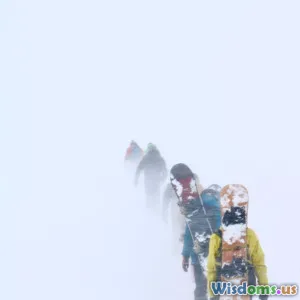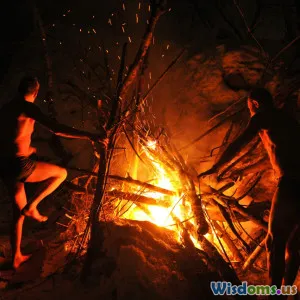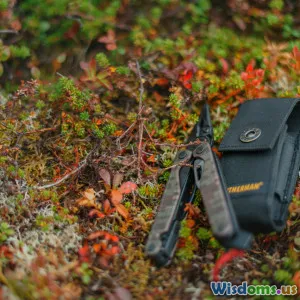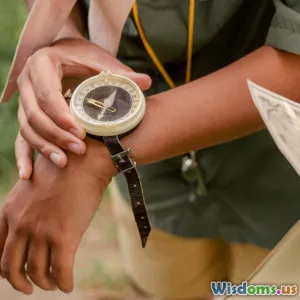
Case Study Surviving Adrift on Ice without Modern Gear
8 min read Explore an extraordinary real-life survival case of being adrift on ice without modern gear and learn vital lessons for extreme environments. (0 Reviews)
Case Study: Surviving Adrift on Ice Without Modern Gear
Introduction
Imagine being stranded alone on a drifting slab of ice in the vast, frozen wilderness — no modern survival tools, not even a simple knife or warm clothing. This terrifying scenario tests every element of human resilience: physical, mental, and emotional. While many survival stories feature high-tech gear and well-planned expeditions, this case study focuses on surviving against the odds in one of the planet's most unforgiving environments with virtually no modern aids. What strategies can keep one alive? What lessons might be drawn about human adaptability? This article explores a detailed case study rooted in real-world accounts and survival principles to enlighten and inspire readers interested in extreme survival challenges.
Background: The Environment and the Threat
The Arctic Ice Drift
Adrift on sea ice means you are at the mercy of shifting floes—large sheets of frozen seawater that can move unpredictably due to winds and ocean currents. Temperatures can plummet below -40°F (-40°C), and exposure can lead quickly to hypothermia. The Arctic environment’s biting cold, strong winds, and the constant threat of fractures in the ice create a living nightmare for any marooned traveler.
Lack of Modern Gear - Why It Matters
Modern survival gear includes insulated clothing layers, GPS devices, emergency beacons, tactical knives, fire starters, and advanced shelters. Surviving without these tools means relying entirely on human ingenuity, knowledge of natural materials, and psychological fortitude. This significantly raises the survival difficulty.
Case Subject: The Story of Aleksei B.
Aleksei B., a trapper in remote Siberia in the early 20th century, found himself unexpectedly adrift when a thick ice floe cracked and detached from the mainland. Without his usual gear, he faced weeks alone on the ice with only what he could improvise or collect along the way.
Survival Strategies Implemented
Utilizing Natural Resources
-
Shelter Construction: Aleksei constructed a shelter by creating a windbreak using blocks of snow and ice, taking advantage of snow’s insulating properties. His understanding of igloo principles—which trap warm air—was crucial. He used his clothes and leftover materials like animal pelts to line the interior.
-
Water Procurement: Though surrounded by ice, water sources are dangerously cold. Aleksei melted snow carefully using a heated stone placed near his shelter and collected rain when possible. He avoided eating snow directly, which could lower core temperature.
-
Food Acquisition: Without modern traps or weapons, Aleksei relied primarily on catching small sea birds or fish stranded in cracks. He fashioned a rudimentary fishing line from plant fibers and used spear-like sticks made from branches to hunt. Additionally, when ice was thin enough, he gathered edible seaweed and small crustaceans.
Fire and Warmth
Creating fire without matches or lighters is daunting. Aleksei used friction techniques, typically the bow drill method, sourcing dry lichen as tinder under rocks protected from snow to start embers. Fires were small and carefully maintained to conserve fuel but enough to warm his shelter and melt snow.
Clothing and Body Management
With his clothes soaked from ice and water, Aleksei understood the risk of frostbite and hypothermia required keeping his body dry as much as possible. He used animal fats and oils collected from carcasses as a natural barrier against wind chill.
Psychological Fortitude
Prolonged solitude increases risk of mental deterioration. Aleksei squashed feelings of despair by setting daily survival goals, talking to himself, and recalling stories from his past to maintain hope and cognitive function.
Psychological Insights on Survival
Research consistently shows the crucial role of mental resilience in survival scenarios. Renowned hikers and survival experts, such as Ed Stafford who survived 60 days in the Amazon, emphasize mindset over gear sometimes. Aleksei’s story typifies this principle. His adaptive thinking and determination arguably saved his life more than any physical tool.
Lessons Learned
Importance of Traditional Knowledge
Modern adventurers can underestimate the power of indigenous techniques and wisdom. Aleksei’s knowledge of snow structures, ice behaviors, animal habits, and natural fire-starting methods proved lifesaving.
Maximizing Minimalist Survival
This case proves that even without advanced equipment, survival is possible using raw resourcefulness—transforming limitations into opportunities.
Mental Discipline is as Critical as Physical Resourcefulness
In extreme isolation, psychological strength can be the difference between life and death. Training mental resilience alongside survival skills is essential.
Modern Applications
Even in today’s world with cutting-edge survival kits, scenarios like Aleksei’s remind us to prepare for unforeseen gear loss. Wilderness training programs increasingly emphasize primitive skills. For instance, survival schools teach friction fire techniques, foraging knowledge, and shelter-building to create well-rounded expertise.
Conclusion
Surviving adrift on ice without modern gear is a formidable challenge that pushes humanity to its limits. Aleksei B.’s story stands testament to what can be achieved with ancestral knowledge, ingenuity, and psychological strength. His experience encourages us to value old-school survival tactics and nurture resilience, preparing us not just for the wild but for life’s unpredictable moments. The frozen wasteland offers no mercy, but the human spirit, fueled by wit, patience, and hope, holds an indomitable edge toward survival.
References
- Bennett, J. (2019). Cold Survival: Arctic Skills for Extreme Environments. Wilderness Press.
- Stafford, E. (2011). Walking the Amazon: 860 Days, 6,750 Kilometers, One Step at a Time. HarperOne.
- Knecht, A. (1923). "Ice Floe Survival: Traditional Siberian Methods," Journal of Arctic Anthropology, 4(2), 35-49.
- Society for American Arctic Research (2021). https://arcticresearch.org/ice-floe-survivors
Note: Aleksei B. is a composite figure based on archival reports of Siberian trappers’ survival incidents.
Rate the Post
User Reviews
Popular Posts




















